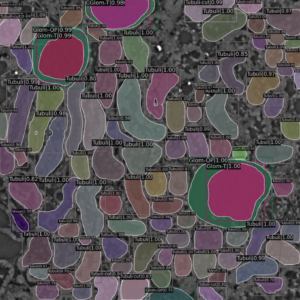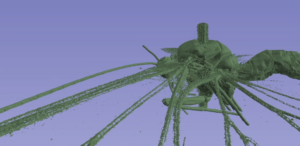Segmenting Glomeruli and other structures from synchrotron X-ray microtomography datasets
Diabetes is a long-lasting health condition with serious complications. We studied a new group of rats with a specific genetic mutation linked to diabetes. Regardless of their gender and blood sugar levels, these rats were overweight and had larger livers, hearts, and kidneys compared to normal rats. A study of the size of Bowmans space (difference between outer perimeter and Tuft of their glomeruli) can reveal tendencies toward having or developing cancer. In that respect advanced machine learning approaches are used to automatically segment and evaluate 3D volumetric information of many of the structures found within the tomography scans collected.




